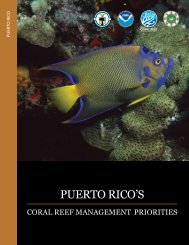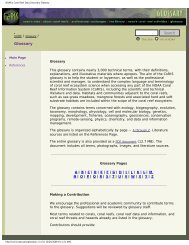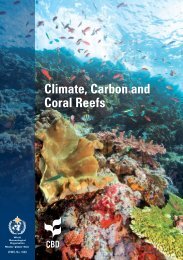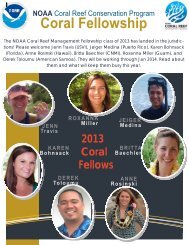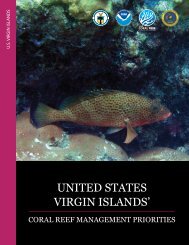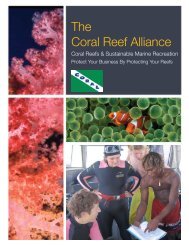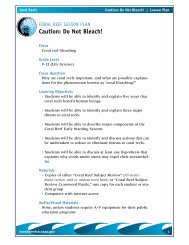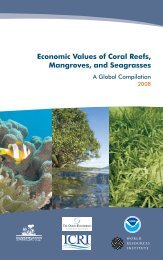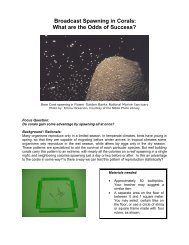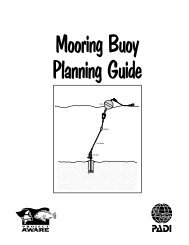Deep-Sea Coral Collection Protocols - NOAA's Coral Reef ...
Deep-Sea Coral Collection Protocols - NOAA's Coral Reef ...
Deep-Sea Coral Collection Protocols - NOAA's Coral Reef ...
- No tags were found...
You also want an ePaper? Increase the reach of your titles
YUMPU automatically turns print PDFs into web optimized ePapers that Google loves.
CollectingThere is a broad range of opinion about how much coral to collect, depending upon the intendedpurpose of the sample. Most museums would prefer an entire colony, especially if the specimen is a newspecies, or intended for display. These can be large, though, and difficult to ship. For age and growthstudies, the holdfast of a large colony is most important. For species identifications based on grossmorphology, a small branched segment will often suffice, as described in the chapters by Sanchez andCairns. For molecular studies, a small amount of preserved tissue is most useful, particularly if tissue canbe collected from several colonies.One thing deep-coral researchers can agree upon is that photographs and videos alone are notparticularly useful for species level identifications. Photographs can help, of course, especially whenaccompanied by a physical specimen, and referenced with a biogeographic database. Photographs areoften suitable for genus and family level identifications.There is also a broad range of opinion about how to preserve a sample, and this is discussed onfollowing pages. For some corals, like bubblegum and primnoid corals, dry samples can be useful.Dried skeletal materials of ahermatypic scleractinia, antipatharians, and bamboo corals are also usefulfor radiocarbon analyses. Some biologists feel that dry samples should be made only when absolutelynecessary; for example, when you don’t have room to store the whole specimen. Wet samples collectedby the Mountains in the <strong>Sea</strong> Research Group are not small, on purpose, because they don’t want tolose information that only wet samples can provide. Large wet samples will benefit the most futurestudies, but 6-10" branched segments are usually sufficient for species identification.Your study organism may have the opportunity for regrowth if you leave the organism in place, and takeonly a branch. This is particularly relevant to cases where repeated samples of a single species are beingcollected. Selective clippings are the most responsible way to perform good science without impactinga localized population. Try to take only a clipping from the largest specimen. The largest colonies maybe the most productive, and should be left alive in situ. It is preferable to collect your sample from adense aggregation. Solitary colonies may be pioneers that facilitate more settlement, and therefore morefuture habitat.PermitsOrders Scleractinia and Antipatharia, and Family Stylasteridae are listed on CITES AppendixII. <strong>Collection</strong> from U.S. waters and subsequent transport within the U.S. does not require aCITES permit, transport of these corals across international borders requires an export permitfrom the CITES Management Authority in the country of origin. <strong>Collection</strong>s in state waters (upto 3 miles) need a state permit, those in Federal waters need a Letter of Acknowledgement ofscientific research, which is available from regional NMFS offices. To collect from MarineReserves, you need special permission from the reserve management authority. These permitsare granted by regional fisheries science centers. A list of these centers is available here:http://www.noaa.gov/fisheries.html.29





